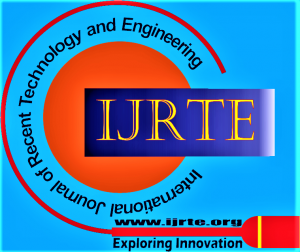![]()
Traffic Signal Scheduling using Machine Learning
Onkar Nichat1, Suraj Kulkarni2, Aditya Mane3, Siddhesh Naik4, Shubham Bhandari5
1Mr. Onkar Nichat, Department of Computer Science and Engineering, Imperial College of Engineering and Research, Wagholi, Pune (Maharashtra), India.
2Mr. Suraj Kulkarni, Department of Computer Science and Engineering, Imperial College of Engineering and Research, Wagholi, Pune (Maharashtra), India.
3Mr. Aditya Shripad Mane, Department of Computer Engineering, JSPM’s Imperial College of Engineering and Research, Wagholi, Pune (Maharashtra), India.
4Mr. Siddhesh Naik, Department of Computer Engineering, JSPM’s Imperial College of Engineering and Research, Wagholi, Pune (Maharashtra), India.
5Mr. Shubham Bhandari, Assistant Professor, Jayawant Shikshan Prasarak Mandal’s Imperial college of engineering and research, Wagholi, Pune (Maharashtra), India.
Manuscript received on 20 February 2023 | Revised Manuscript received on 14 March 2023 | Manuscript Accepted on 15 March 2023 | Manuscript published on 30 March 2023 | PP: 111-116 | Volume-11 Issue-6, March 2023 | Retrieval Number: 100.1/ijrte.F74890311623 | DOI: 10.35940/ijrte.F7489.0311623
Open Access | Editorial and Publishing Policies | Cite | Mendeley | Indexing and Abstracting
© The Authors. Blue Eyes Intelligence Engineering and Sciences Publication (BEIESP). This is an open access article under the CC-BY-NC-ND license (http://creativecommons.org/licenses/by-nc-nd/4.0/)
Abstract: Within the past few years, the number of vehicles increased drastically, and therefore, the traffic of cars became a significant issue in urban as well as rural areas. Considerable traffic is happening in the area where many roads intersect with each other. Our existing traffic signal is not real-time and operates according to its pre-programmed settings, regardless of traffic conditions. To avoid traffic, traffic signals should give priority to the road with the highest vehicle density. By doing this, we can accommodate the maximum number of vehicles within a specific period. This type of signal responds to real-time situations and makes informed decisions in response. Hence, this system is also known as an intelligent traffic light system. The purpose of this study is to get the traffic situation on the roads in real-time and act accordingly. Using a web camera that should be mounted on the signals, we can obtain real-time footage of the streets. By applying image processing methods, we can determine the vehicle densities on each road. Signals that are programmed priorly to or incorrect signal scheduling were found to play the most significant role in causing vehicle traffic. This innovative traffic signal scheduling system is a superior option compared to existing systems, as it makes decisions based on real-time traffic conditions.
Keywords: Image recognition, Machine Learning, Image Processing.
Scope of the Article: Machine Learning
